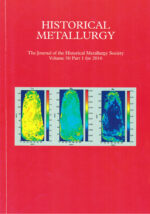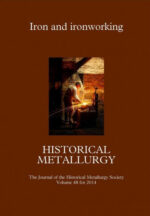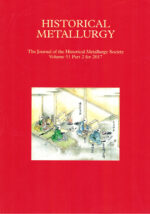Journal Contents
Laxton revisited: a first report on the 1998 excavations
Peter Crew
Pages 49-53
Excavation of another of the large diameter furnaces at Laxton has provided good structural evidence, allowing a more satisfactory reconstruction of the furnaces and of their method of operation.
The bloomery mounds of the Scottish Highlands. Part 2: A review of iron mineralization
Allan J Hall and Effie Photos-Jones
Pages 54-66
The regional and local geology underhes the availability and type of natural resources, be it ore, woodland or water, and was the fundamental influence on the locations chosen for iron making. Possible sources of iron ore available to early bloomery iron workers in Scotland have been established from the recorded sources of iron ore. Moreover, using modem knowledge of iron geochemistry as well as the local and regional geology, further potential sources of iron may be predicted. The question of the original ore used at a bloomery site can be tackled by looking for the remains of ore processing/crushing, using techniques such as ore petrography. In spite of much geological evidence for potential iron ores other than bog ore, no positive evidence for their use was found at the bloomery sites investigated. Iron-rich manganiferous slags with minor sihca suggest that bog iron ore was used.
An integrated geophysical and analytical appraisal of early iron-working: three case studies
W Vernon, G McDonnell and A Schmidt
Pages 67-81
Geophysical surveys are a standard method of site assessment. However very few are used specifically to evaluate structures associated with metallurgical activity. Routime geophysical surveys frequently encounter ironworking activity but this data is usually ignored as it tends to be excessively ‘noisy’ and difficult to interpret. A combuiation of geophysical surveying techniques were applied to three iron-smelting sites in North Yorkshire to investigate the effectiveness of geophysics in identifying iron-working activity.
Experiments with 'medieval steel' plates
Alan Williams
Pages 82-86
Some experiments on quenching and tempering were carried out on a sample of modem ultra-pure steel and two specimens of 16th century armour, to observe changes in hardness with time at low tempering temperatures. The hardness of the specimens of armour fell more rapidly than might have been expected by comparison with modern steels. This has suggested a reason why gilding was found to be a difficult process to combine with hardening by armourers.






There are no reviews yet.